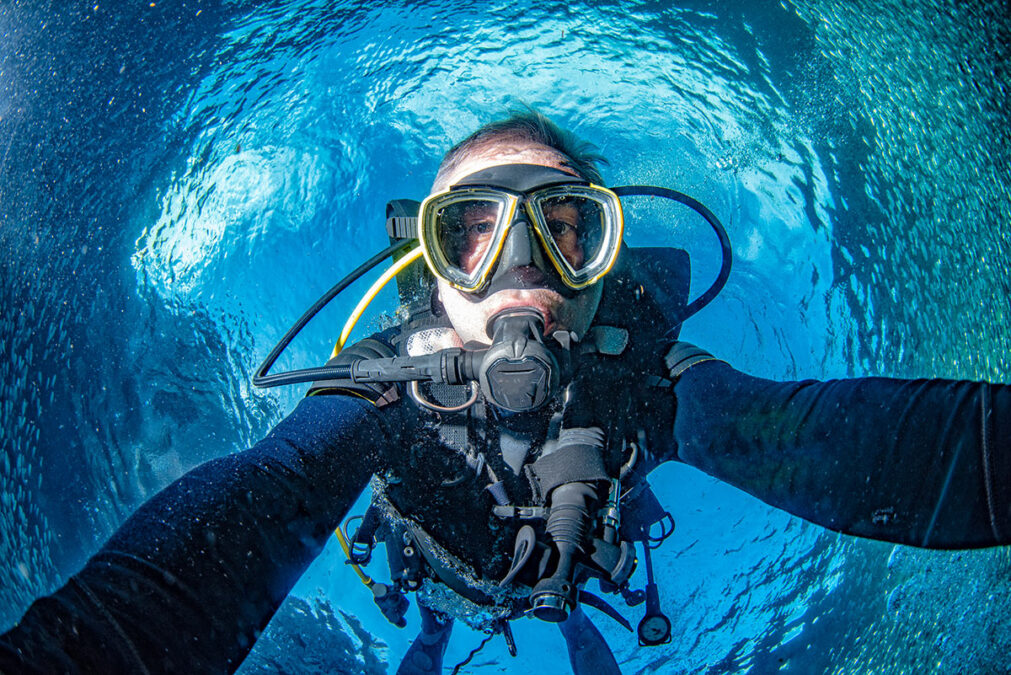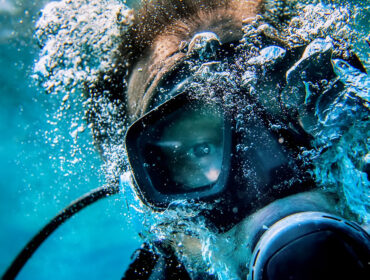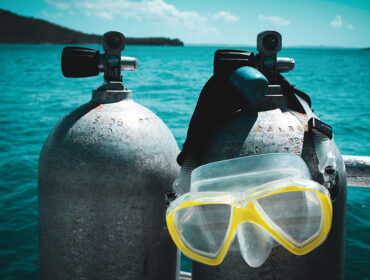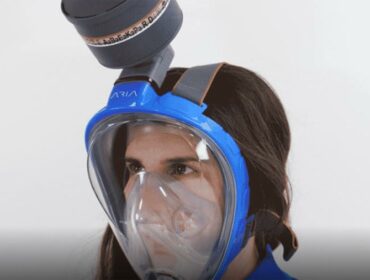Traditional dive masks are simple. That’s part of their charm. They cover your eyes and nose, and that’s about it. You pair them with a separate regulator that goes in your mouth. You can swap out lenses, fit in a prescription scuba mask, and they’re generally compact and easier to pack. They’ve been the go-to for recreational divers, pros, and everyone in between for decades. Why? Because they work.
Full-face masks are newer and come with additional features. They cover your whole face, and the regulator is built into the mask itself. This means you breathe normally—no mouthpiece required. You can talk underwater if it’s equipped with a communication system. They also help prevent jaw fatigue (because yeah, biting down on a regulator gets old fast). But they’re bulkier, pricier, and not always allowed on every dive charter.
When to Use a Traditional Dive Mask
If you’re a beginner, you’re likely to start with a traditional mask. They’re more affordable, easier to find, and work well for most dive conditions. You’ll have fewer straps and seals to deal with. A smaller surface area means less fogging up. And if you’re looking for a scuba mask prescription, traditional styles give you more lens options.
They’re also more modular. You can swap in your own regulator, add a GoPro mount, and choose a lens that suits your face and diving goals. For prescription divers, they’re the easiest way to go custom. Whether you need bifocals, reading inserts, or full-strength vision correction, traditional masks offer more flexibility. Sites like [insert link to prescription scuba mask page] even let you choose the lens strength for each eye and have it shipped to your door.
Plus, if something goes wrong—say your mask floods or you lose your registration—it’s easier to deal with. Every dive instructor teaches with a traditional setup. If you’re starting or prefer having complete control over your gear, this one is the safer bet.
When Full Face Dive Masks Make Sense
But maybe you’re not here for the basics. Perhaps you’ve got a few dives under your belt and want to try something different. Full face masks definitely offer that wow factor. They’re comfortable, especially on long dives. You breathe naturally—no jaw clenching, no dry mouth. And for cold water? Game-changer. They keep your whole face warm.
They’re also great if you’re filming or talking underwater. Think of instructors, researchers, or videographers who need hands-free communication. The integrated system allows you to speak, hear, and stay streamlined. Some divers who struggle with traditional masks—like those with jaw pain or anxiety about mouth breathing—also find relief in a full-face setup.
But here’s the catch. They’re more expensive. Like, several hundred bucks expensive. You also need a proper fit. A leak in a full-face mask is way more annoying (and riskier) than in a small traditional one. And some dive operators won’t allow them unless you’ve had prior training or certification with them. So it’s not a “buy it and dive” kind of product. It’s more of a commitment.
Which One’s Better for Snorkeling?
Let’s get this out of the way: full-face snorkel masks are not the same as full-face dive masks. Most of the full-face options you see tourists wearing in tropical waters aren’t rated for depth. They’re fine for surface floating but not suitable for diving below a few feet.
For snorkeling, traditional masks paired with a separate snorkel still offer more reliability. You can get prescription snorkel masks easily, and you avoid the risk of CO2 buildup that some cheap full-face snorkels have been flagged for.
If you’re staying at the surface and want something easy for casual use, a well-ventilated full-face snorkel mask is fine—make sure it’s from a trusted brand. But if you’re diving deeper or need a prescription setup? Traditional all the way.
Best Full Face and Traditional Dive Masks Worth Checking Out
Now that you know how each mask works, let’s talk about gear. Not all masks are built the same, and choosing the right one can make all the difference between a killer dive and a foggy, frustrating experience. Here are a few full-face and traditional masks that consistently get high marks from divers, whether you’re just starting or going pro.
Full Face Masks
Cressi Duke Dry Full-Face Mask
This mask gives you a big, wide view while you snorkel—no more tunnel vision or missed moments. It’s built to keep water out, so you can stay relaxed and just enjoy the scenery. Breathing feels natural, like you’re on land. You don’t need to bite down on anything or worry about a snorkel slipping around.
A built-in system helps keep the lens clear so that you won’t deal with fogging mid-swim. If a bit of water sneaks in, the drain valves take care of it fast. The mask’s airflow design keeps everything fresh, even during longer swims. It’s made for comfort and ease, not complication. That means less time adjusting and more time exploring.
OTS Spectrum Full Face Mask
This setup covers your whole face, offering both protection and visibility in one package. It’s ideal for divers who want warmth and a solid seal. The glass is strong and treated to handle tough conditions without scratching easily. It’s shaped to give a wide view, so you won’t feel boxed in underwater.
A five-strap harness system helps the mask stay in place, even in cold or choppy water. It feels balanced and snug once you’ve got it on. It’s built to be stable during deeper dives, where fit and visibility really matter. For anyone diving in colder environments, the insulation it provides is a real benefit. It feels secure without being heavy, and that’s not something you get with just any mask.
Traditional Masks
XS Scuba Fusion Purge Mask
This dive mask is all about keeping things simple underwater. Its three-lens design gives you a clear view without distortion. If water gets in, there’s a built-in valve that lets you clear it fast with one exhale. No more lifting your head or fiddling around—just breathe out, and you’re good. The fit is soft and snug, thanks to a double-edge skirt that seals well on most face shapes. It helps keep leaks to a minimum, even if you move around a lot.
The mask doesn’t feel bulky, which means less drag while you’re swimming. It’s easy to wear for longer dives without discomfort. The strap splits at the back to distribute pressure evenly, preventing sore spots. It holds steady even with waves or movement. Adjusting the fit is quick and intuitive, so you’re not stuck messing with gear when you should be in the water. This one’s reliable, especially if you value comfort and want it to clear quickly.
TUSA Freedom Tri-Quest Mask (M-3001)
This one’s built with a wide, single-lens design that gives a clean, open view under the surface. The lens material is designed to let more light in, making colors brighter and details sharper. It doesn’t just help with visibility—it makes the whole dive feel more immersive. With a low-volume shape, it’s easier to clear and creates less resistance in the water.
The mask stays close to your face, which helps reduce fogging and pressure buildup. It comes with an innovative buckle system that lets you fine-tune the fit in seconds. The strap design helps it sit comfortably without slipping. You won’t have to adjust it constantly, even on longer dives. The overall fit feels secure but not tight, which is great for all-day comfort. Whether you’re new or experienced, it delivers a clear vision without the usual hassle.

Frequently Asked Questions
Not easily. Most companies do not support direct-to-prescription lenses. Some offer internal inserts, but they’re limited and pricey.
Not ideal. They require training and can be harder to clear or remove in emergencies. Best for experienced divers.
Not necessarily, but it’s safer. If your mask floods or your lenses shift, it can cause vision problems. Prescription lenses offer peace of mind.
Full face masks shine here. They cover more skin and reduce jaw fatigue in frigid conditions.
Absolutely. A traditional dive mask works great for snorkeling, especially if paired with a dry-top snorkel and prescription lenses.






